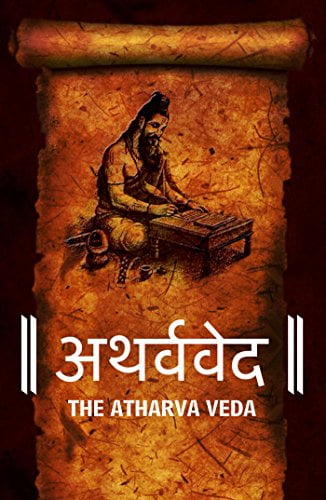Author : The authorship of most Vedas is uncertain and unknown.
The Atharvaveda, like the other Vedas, is a compilation of hymns and texts that were composed by various ancient sages (rishis) over a long period. These rishis are revered for their spiritual insights and the divine revelations they received. Here is an introduction to some of the prominent sages associated with the Atharvaveda:
General Overview
- Oral Tradition: The Atharvaveda, like other Vedas, was transmitted orally for centuries before being written down. This oral tradition ensured the preservation and accuracy of the texts through meticulous memorization and recitation.
- Divine Revelation: The hymns and incantations in the Atharvaveda are considered ‘apauruṣeya,’ meaning they are not of human origin but were divinely revealed to the sages.
Prominent Sages Associated with the Atharvaveda
- Sage Atharvan
- Role: Sage Atharvan is traditionally considered one of the primary seers (rishis) associated with the Atharvaveda. The name “Atharvaveda” itself is derived from him.
- Contribution: Atharvan is credited with many of the hymns that focus on healing, rituals for protection, and other practical aspects of Vedic life. His contributions laid the foundation for the Atharvaveda’s emphasis on practical and everyday concerns.
- Sage Angiras
- Role: Angiras is another key figure associated with the Atharvaveda. Along with Atharvan, he is believed to have composed many of the hymns in this Veda.
- Contribution: The hymns attributed to Angiras often deal with protection against malevolent forces, charms, and spells to ward off evil, and rituals for success and prosperity.
- Sage Kashyapa
- Role: Sage Kashyapa is one of the ancient rishis who contributed to various Vedic texts, including the Atharvaveda.
- Contribution: Kashyapa’s contributions to the Atharvaveda include hymns related to health, healing, and the well-being of families and communities. He is also associated with the rituals and practices intended to promote social harmony and prosperity.
- Sage Bhrigu
- Role: Sage Bhrigu is another significant contributor to the Atharvaveda. He is one of the ancient seers whose insights and revelations are recorded in the Vedic texts.
- Contribution: Bhrigu’s hymns in the Atharvaveda often focus on rituals for longevity, prosperity, and protection. His teachings emphasize the importance of maintaining health and harmony through Vedic rituals.
Significance of the Authors
- Rishis’ Role: The rishis are revered not only as composers of the Vedic hymns but also as seers who had the divine vision to perceive and articulate the cosmic truths contained in the Vedas.
- Spiritual Authority: The authority of the Atharvaveda, like other Vedas, is rooted in the belief that these texts are divinely inspired and revealed to the sages. This lends the Atharvaveda its sacred status and importance in Vedic rituals and Hindu religious practices.
Associated Texts
- Brahmanas and Upanishads: The Atharvaveda is associated with important prose texts like the Gopatha Brahmana, which provides explanations and instructions for the rituals, and the Mundaka Upanishad and Prashna Upanishad, which explore deeper philosophical and spiritual concepts.
Conclusion
The Atharvaveda, a central text in the Vedic tradition, owes its existence and preservation to the collective efforts of numerous ancient sages such as Atharvan, Angiras, Kashyapa, and Bhrigu. These rishis are credited with receiving and recording the divine knowledge that forms the core of the Atharvaveda. Their contributions reflect a focus on practical aspects of life, including health, protection, and prosperity, making the Atharvaveda distinct from the other Vedas. The hymns and rituals prescribed by these sages continue to influence Hindu rituals and cultural practices, highlighting the enduring significance of the Atharvaveda in the spiritual and cultural heritage of Hinduism.






